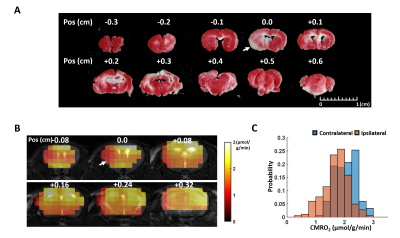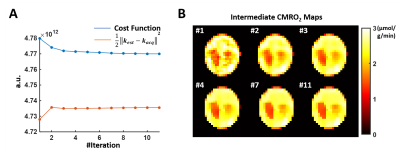Yuning Gu1, Huiyun Gao2, Kihwan Kim1, Yunmei Wang2, and Xin Yu1,3
1Biomedical Engineering, Case Western Reserve University, Cleveland, OH, United States, 2Medicine, Case Western Reserve University, Cleveland, OH, United States, 3Radiology, Case Western Reserve University, Cleveland, OH, United States
1Biomedical Engineering, Case Western Reserve University, Cleveland, OH, United States, 2Medicine, Case Western Reserve University, Cleveland, OH, United States, 3Radiology, Case Western Reserve University, Cleveland, OH, United States
We developed a model-based
approach for CMRO2 mapping in the post-stroke mouse brain with 1.6-mm nominal
resolution at 9.4 T. The method showed
~50% reduced CMRO2 in the infarct core.

